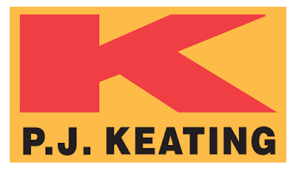News

Under EPA agreement, Marine Corps Base Hawaii to make improvements after stormwater violations
Aug 11, 2022
HONOLULU – Today, the U.S. Environmental Protection Agency (EPA) announced a Federal Facility Compliance Agreement with the U.S. Marine Corps to make improvements related to stormwater discharges at the Marine Corps Base Hawaii (MCBH) located on the Mokapu Peninsula of Kaneohe, Oahu.
“This Agreement marks a major milestone in protecting Hawaii’s water quality from damage caused by military stormwater discharges,” said EPA Pacific Southwest Regional Administrator Martha Guzman. “By addressing significant deficiencies related to its stormwater program, the Marine Corps will protect cultural and recreational waters including Kaneohe Bay, Kailua Bay and the Nu‘upia Pond.”
Stormwater runoff picks up pollutants like trash, chemicals, oils, and dirt that can harm our rivers, streams, lakes, and coastal waters. Permitting is designed to prevent harmful stormwater runoff into local surface waters.
The stormwater system at issue in this agreement is regulated by the Hawai’i Department of Health (DOH) under a National Pollutant Discharge Elimination System (NPDES) Municipal Separate Storm Sewer System permit, as authorized under the Clean Water Act.
In 2020, EPA and Hawai’i DOH conducted an audit of MCBH’s compliance with its NPDES permit and found the facility exceeded discharge limits and failed to submit all discharge monitoring data required by the permit. The lack of required data and numerous effluent exceedances demonstrated that the Marine Corps was failing to carry out the NPDES-required systems and training to detect unauthorized discharges from its stormwater system.
The Agreement announced today will require MCBH to:
-- Carry out a plan to prioritize stormwater outfalls for screening to effectively reduce trash discharges
-- Provide staff with relevant training to build awareness about stormwater requirements and reduce unauthorized discharges throughout the storm system
-- Evaluate appropriate projects to include systems that use or mimic natural processes that result in better stormwater management and natural areas that provide habitat, flood protection, and cleaner water
-- Develop a Construction Best Management Practices Field Manual to establish consistency in implementation and construction project oversight
-- Improve detection and elimination of non-stormwater wastewater entering into and discharging out of their storm water system
-- Establish an asset management program to track, maintain and replace key components to their stormwater system
-- Hire a third-party to conduct an audit of MCBH’s stormwater program with a focus on public outreach and education, pollution prevention and good housekeeping, and industrial/commercial management
Learn more about EPA’s Pacific Southwest Region. Connect with us on Facebook and on Twitter.
###
Media Contact: Alejandro Diaz, 808-541-2711, [email protected]
Professional Presentation









































































































